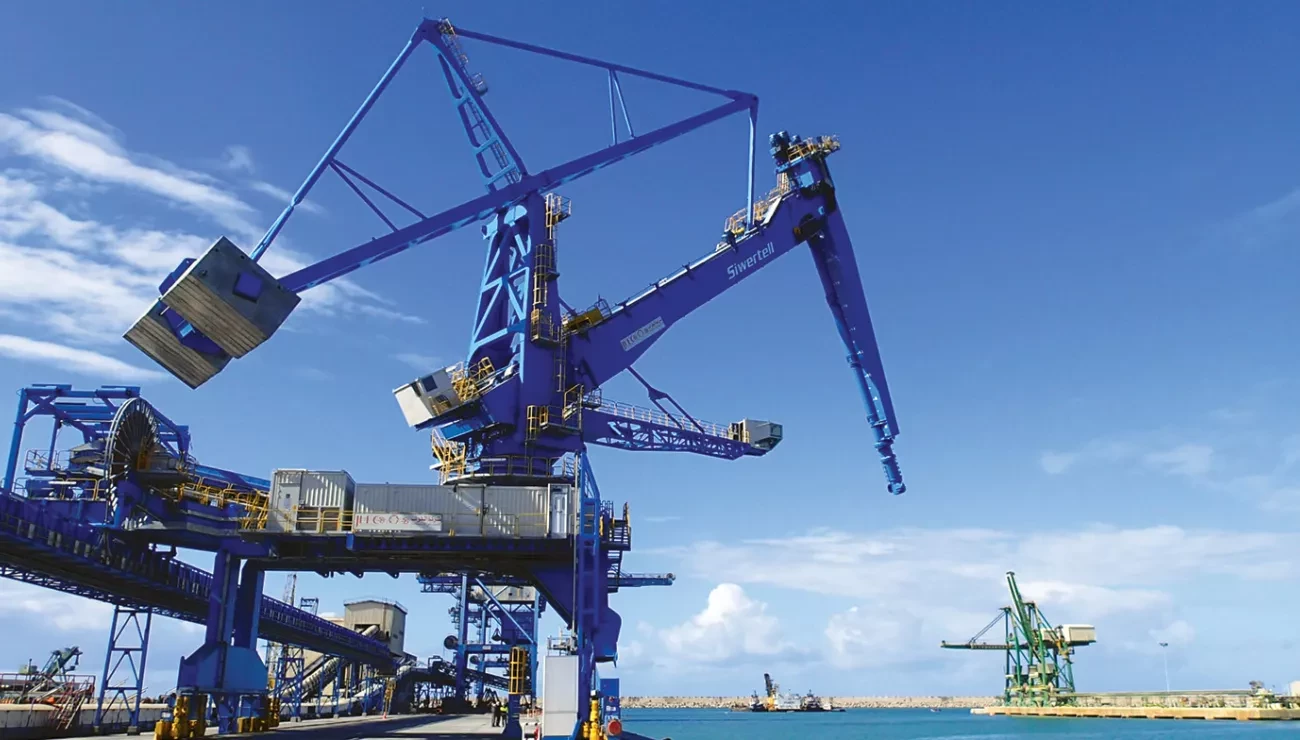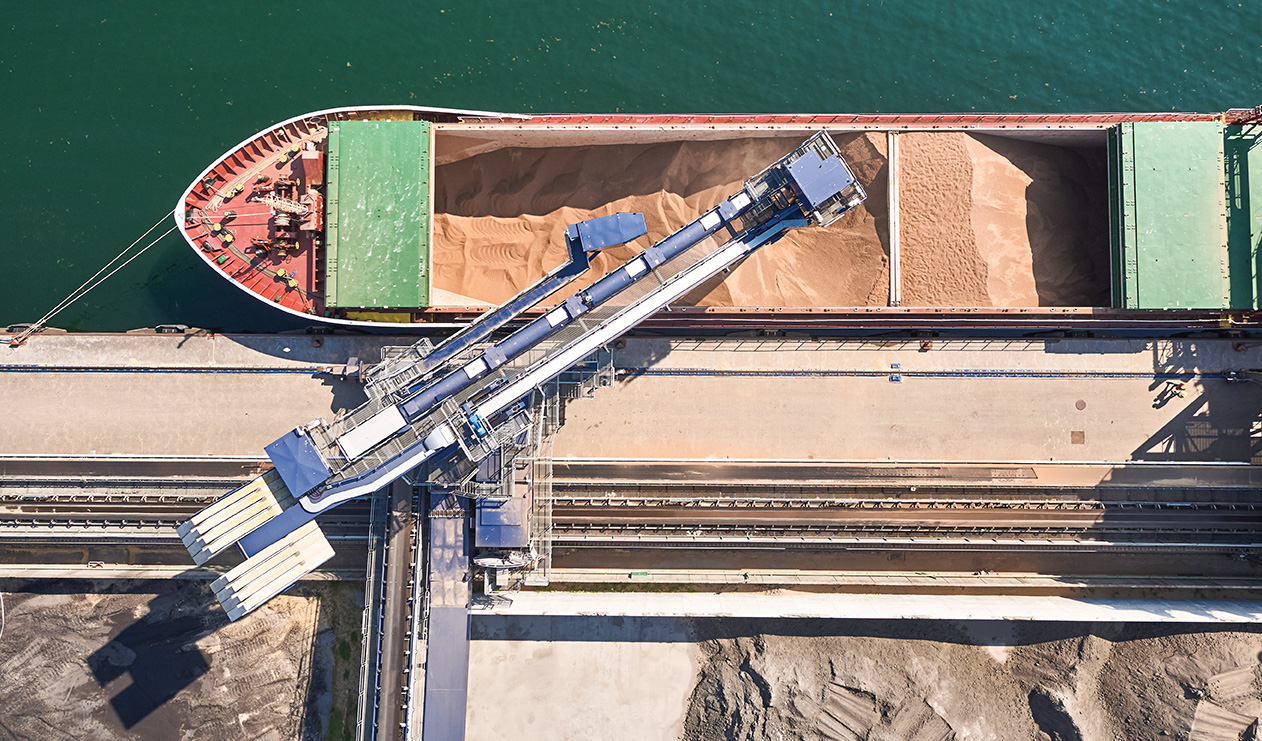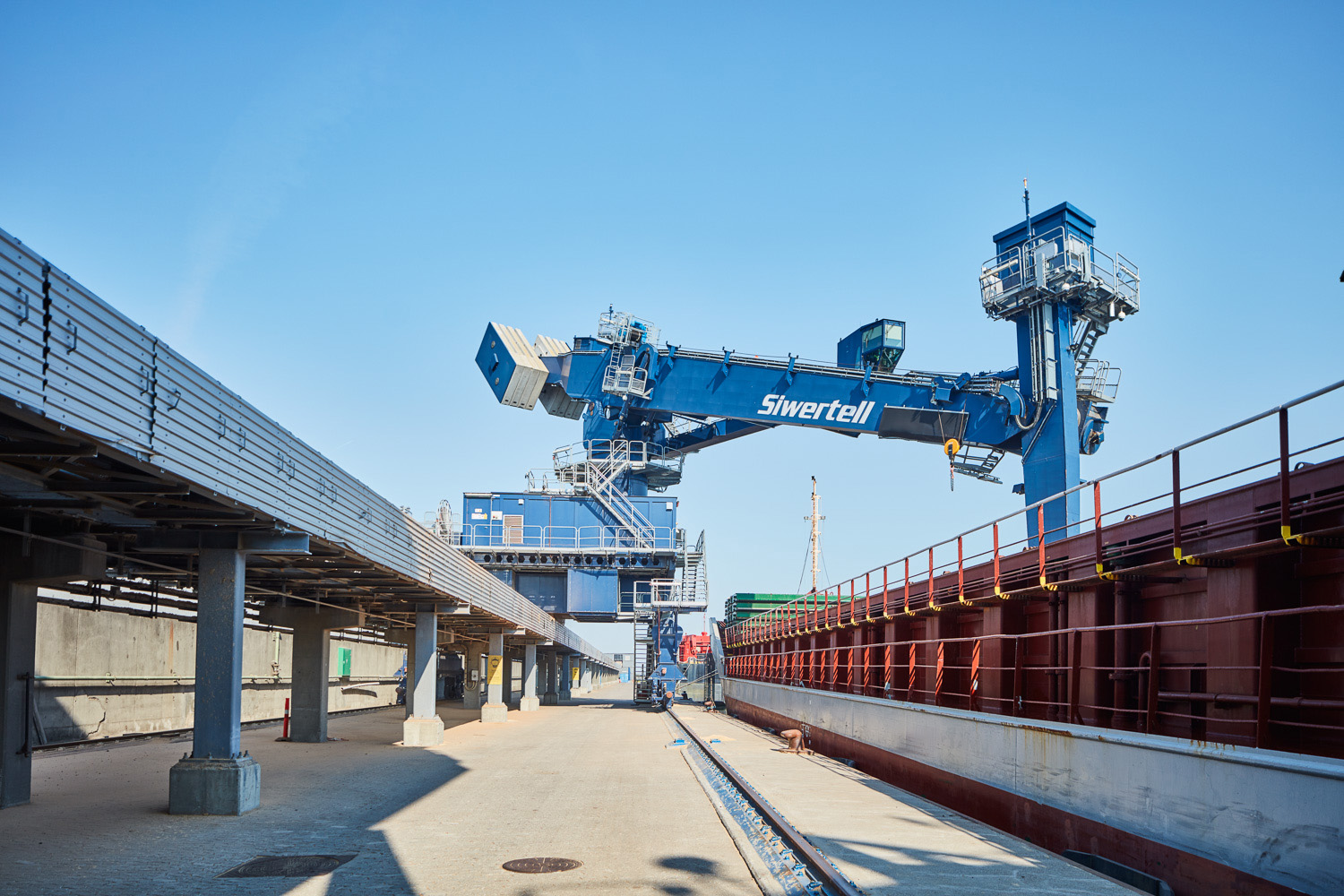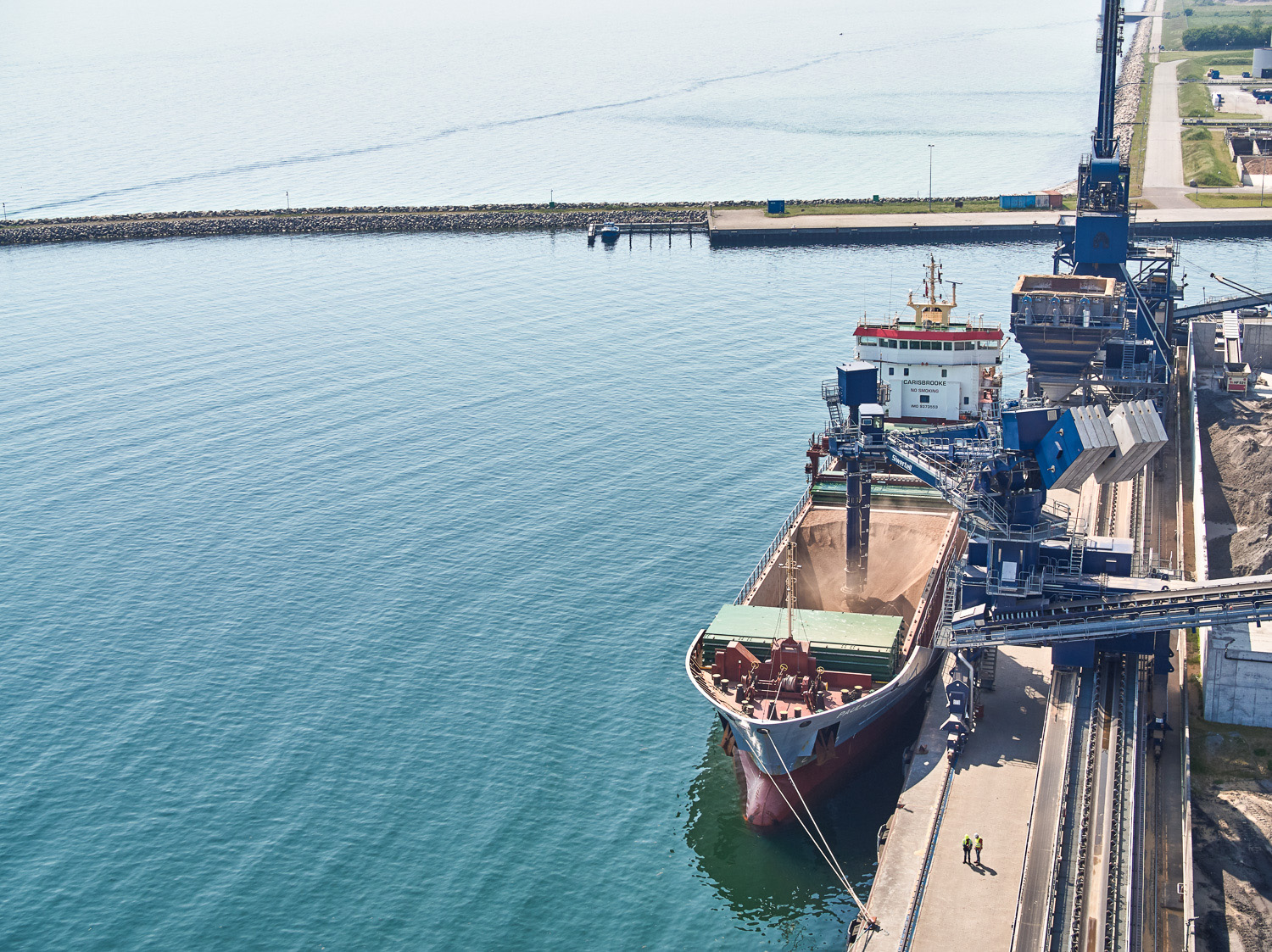
Weight: invisible, not insignificant
15 Jan 2020Jetty reinforcements to accommodate heavy bulk handling equipment can easily correspond to fifty percent of the cost of the actual equipment; a powerful argument as to why operators should consider lightweight machines.
As throughput demands grow in ports, operators have to make the most of their available quay space and cannot easily increase their number, or alongside length. More often than not, any newly-built quay areas must also be more strongly constructed than their older counterparts, and at considerably greater cost. The reason is simple: weight.
In fact, though it is impossible to see, machinery weight can be the make-or-break element in a dry bulk jetty construction. Not only the sheer level of equipment weight, but the manner and footprint over which it is distributed all have a significant impact.

Heavier the weight, higher the costs
Heavy machinery can attract big-ticket engineering costs in the form of steel reinforcements. As higher capacities are needed, dry bulk material handling systems like cranes and continuous unloaders must either get larger or more numerous – in both cases, adding weight to the jetty. Therefore, during the planning phase of an installation, it is crucial that the weight of equipment and its corresponding systems is carefully considered to ensure that any new or existing jetty is strong enough to withstand the extreme loads associated with a dry bulk handling operation.
Reducing any additional machine weight is advantageous for customers and manufacturers. For the customer, not only can significant savings be made in terms of the need for quay reinforcement works, but also, a proportionately higher-throughput machine can be selected for a given strength of quay, delivering impressive returns on investment and securing capacity for any future growth.
For the manufacturer, it reduces the intrinsic cost of the machine, eliminating any unnecessary metal work or components and increasing the flexibility of the product as it is suitable for a larger number of locations, even where quay space is tight and lacks suitable reinforcement.

Lighter machines offer better value
“Customers are always glad of the opportunity to choose a lighter unloader,” says Juha Huovilainen, Sales Director, Bruks Siwertell. “It usually offers much better all-around value through cost savings on quay developments and through an increase in capacity, both ultimately mean that operators get more for their money.
“Add to that, the fact that our continuous screw-type Siwertell unloaders, have been specially engineered to be lighter than other systems in their capacity class, it makes equal sense to go for a higher-capacity unloader,” Mr Huovilainen continues. “Higher through-ship capacities, coupled with cost savings, are always welcome at ports, especially as demand across many dry bulk trades is increasing.”
The most straightforward way to address the pressure of weight on a port is to choose the lightest type of equipment. Today’s dry bulk material handling market is characterized by competing technologies, but bucket chain systems and grab cranes have dominated, and many of these types of machines are still used today. These unloaders are characterized by large surface areas of unspecialized metal, which increases weight.
For example, bucket chain systems have as many as 50 sturdy metal buckets, which have to be hoisted through a large vertical cylinder, wide enough in diameter to accommodate them. Half of these, in turn, are carrying a load as they are raised. All this weight requires a considerable counterweight to match the extraordinary load of the system.
A grab crane, meanwhile, is little better. To develop a system of any kind of scale and throughput, a huge grab bucket must be implemented. The higher the throughput, the larger and more cumbersome the bucket – its scale, and that of the necessary support systems to hoist and balance it, all dramatically increase exponentially with size.
Bruks Siwertell’s mechanical screw-type unloaders, however, are different. With a counter-rotating inlet feeder operating at a continuous rated capacity, the unloader’s cargo handling throughput is not dependent on the size, or number, of buckets or containers. It is therefore able to transfer large volumes of cargo with higher through-ship efficiency than these other types of machines. With one straightforward mechanical motion and a counterweight to balance the screw-type conveyor arm, the number of moving parts and the overall weight of the system is reduced.

Maximizing investment returns
If an operator chooses to invest in a Siwertell screw-type unloader, it automatically selects a lower weight system compared with other available alternatives, meaning the cost of quay reinforcements can be omitted in the majority of cases, as much as halving overall investment costs. The advantages do not stop here. A Siwertell unloader offers other benefits when it comes to the dynamics of weight distribution on the quay as well.
Compared with other systems, including grab cranes and bucket chain systems, the Siwertell unloader has a smaller physical footprint. This is because the fundamental elements of the system are smaller in diameter. As a result, the gantry for rail-mounted versions fits onto relatively narrow rails, again reducing weight and leaving more quay space open and gangways clear, which is vital for maintaining high port productivity.
“When rails cannot be installed on the quay, operators have a choice of Siwertell port-mobile unloaders,” notes Mr Huovilainen. “Because they can be used independently of rails, turrets and other static quay constructions, they are the ultimate cost-saving device in that respect, and require no reinforcement work either. Port-mobile unloaders can also handle higher cargo throughputs than other competing systems, and can be stored at any time, which maximizes the use of limited revenue-earning quay space.
“By choosing any Siwertell unloader over competing technologies, port operators can reduce operating expenditure as well as capital,” he says. “The mechanical screw system is lighter, with a smaller footprint and can handle much higher throughput volumes than a bucket chain or grab crane of equivalent size and weight.
“Thanks to this, vessels can be discharged faster and spend much less time at berth, resulting in much lower jetty costs.
“Weight is not a concern for every customer, but in areas with aging port infrastructure, it is a key consideration and limitation when planning new unloader investments and bulk material handling activities,” stresses Mr Huovilainen. “If a company is about to invest in a quay development, it may be happy to know there are extremely good unloader options to explore first, which get the best performance out of the infrastructure they have before opting for heavy, conventional and costly alternatives.”
PLEASE CONTACT US FOR MORE INFORMATION

 Bruks-Siwertell
Bruks-Siwertell